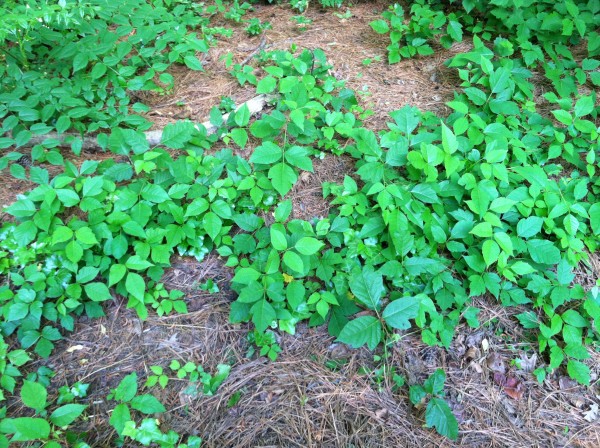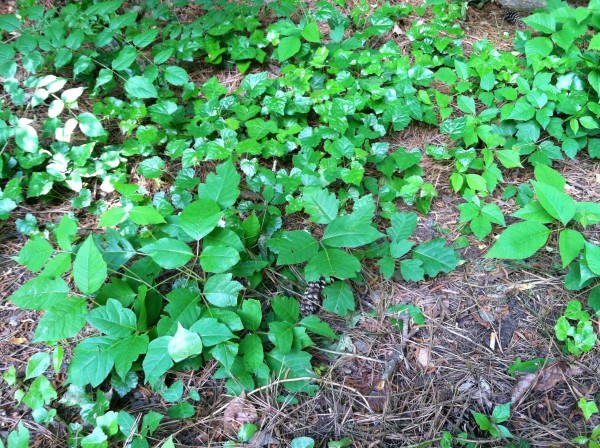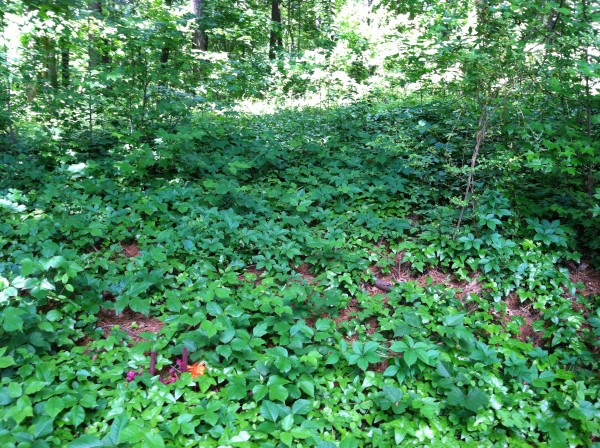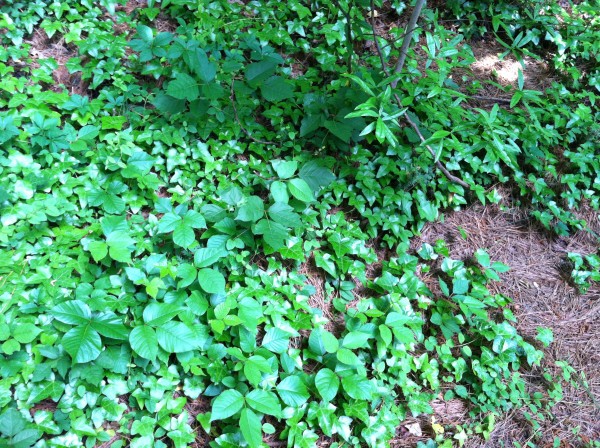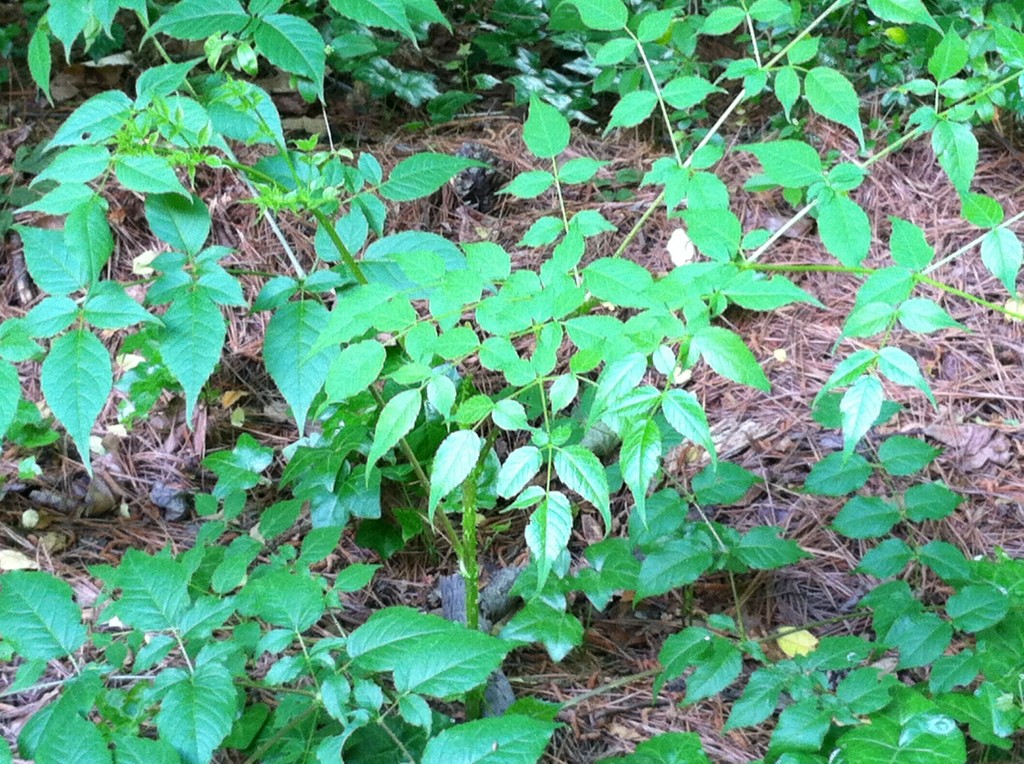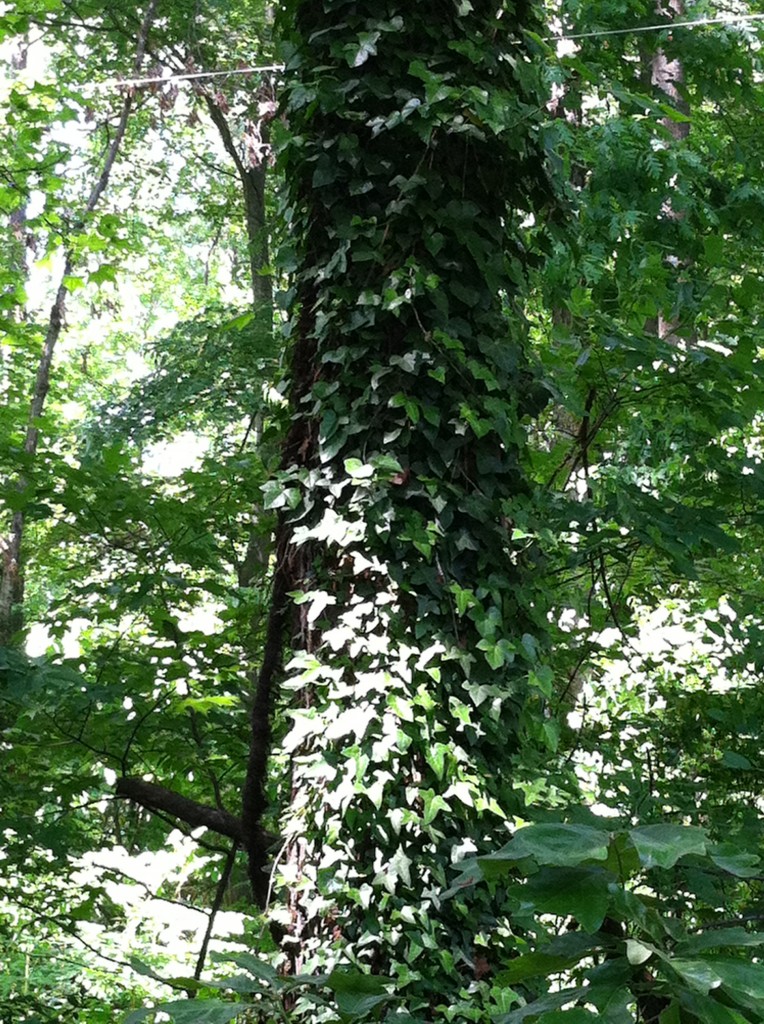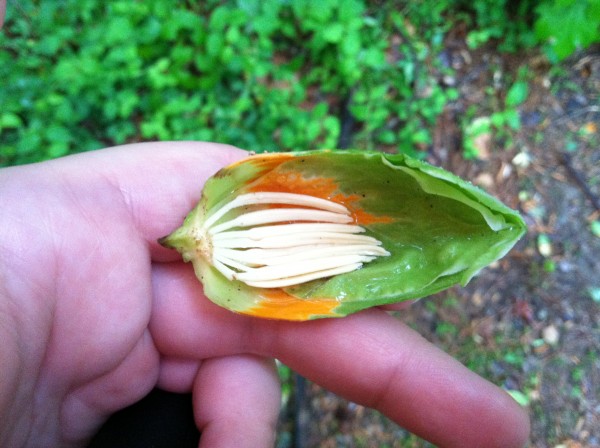While generally I have enjoyed living in North Carolina, there is one aspect of life here that I have difficulty dealing with (okay, a few, starting with the political climate and followed by the heat), and that is all the POISON IVY!
It is unbelievable. The stuff is everywhere. I can’t even get into the woods behind my apartment anymore because the stuff is so thick. I don’t just mean that there is a patch of it- there is a veritable garden. As if some urushiophile planted it, lovingly watered it everyday, sang to it, and read it bedtime stories until it grew as lush and thick as a miniature poison ivy jungle.
Think I’m kidding? Here are some pictures of the area behind the apartment immediately past mine:
Nearly every plant in these pictures, except for some plants on the periphery and the English ivy hiding below, is a poison ivy plant.
There is also a sort of path of mini plants that are making their way towards my neighbor’s apartment. If they turn to the right at all, they’re history.
All this poison ivy is really a shame, because there are some interesting plants that are now unreachable due to the poison ivy menace. For instance, this baby Devil’s Walking Stick, visible below in the picture below (which is fairly blurry because I had to keep my distance from its immediate neighbors):
Notice that its thorny trunk is green, rather than brown. I had never seen that before, that is until I noticed the new growth on this little sapling’s big brother, standing about 5 feet away and also surrounded by poison ivy, which I will take a picture of at some point (the picture came out too blurry to post). These awesome native Pacific West trees are all over in the woods behind my apartment, and some of them are quite large. At some point I will post some of the other pictures I have taken of these unique trees.
But first, I want to show the root (pun intended) of this expansive growth of poison ivy plants.
That wrist-thick hairy brown rope is the poison ivy vine. The hairs on the vine are actually the poison ivy’s aerial roots. I have read that you can kill the plant by severing the vine (although you have to be careful how you go about it), and I am definitely somewhat tempted to give it a shot. I would have to do some more reading though, and plan it out carefully so as not to expose myself to the poison ivy.
Anyway, as I was walking around my apartment building taking shots of poison ivy, I discovered this:
That (as identified for me by Sarah Haggerty at the last Plant Guild class), is a tulip poplar flower. Which means that there is a tulip poplar tree around my building, and once I started looking it was easy to spot. I’ll have to post a picture at some point, as they have very interesting leaves. The slider below shows some tulip poplar flowers I found at Lake Johnson (these are the ones Sarah identified):
Speaking of the Piedmont Wildlife Center, the Wild Harvest class (Shoots and Summer Greens) yesterday was awesome, but that will have to wait for another post.
Before I sign off, I just wanted to post some pictures of my awesome new Coleman instant 4-man tent that is now set up on my patio. Perfect for mosquito-free summer chillin’, as well as providing a safe place for Ollie to enjoy the outdoors (he hasn’t been in there yet).
